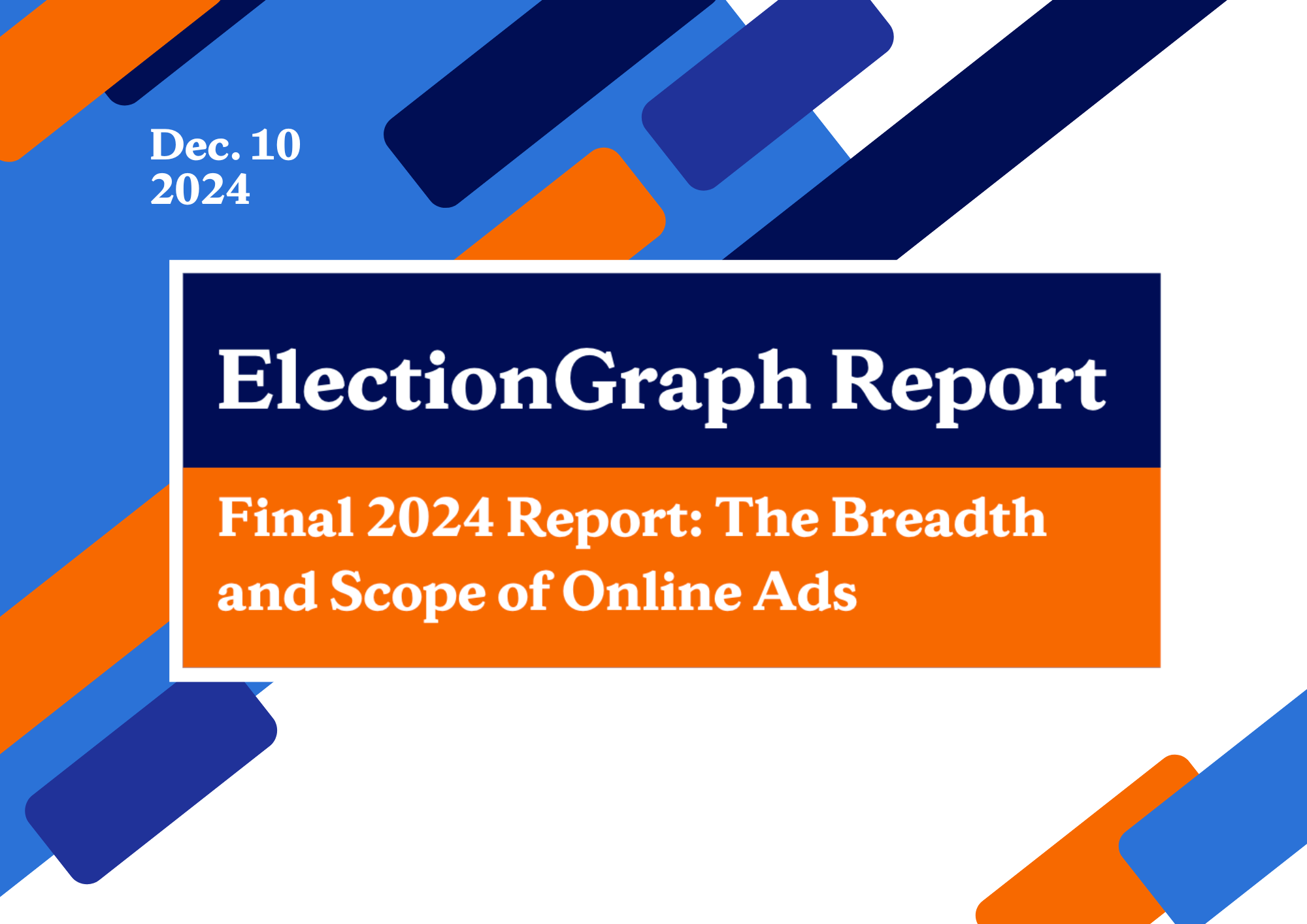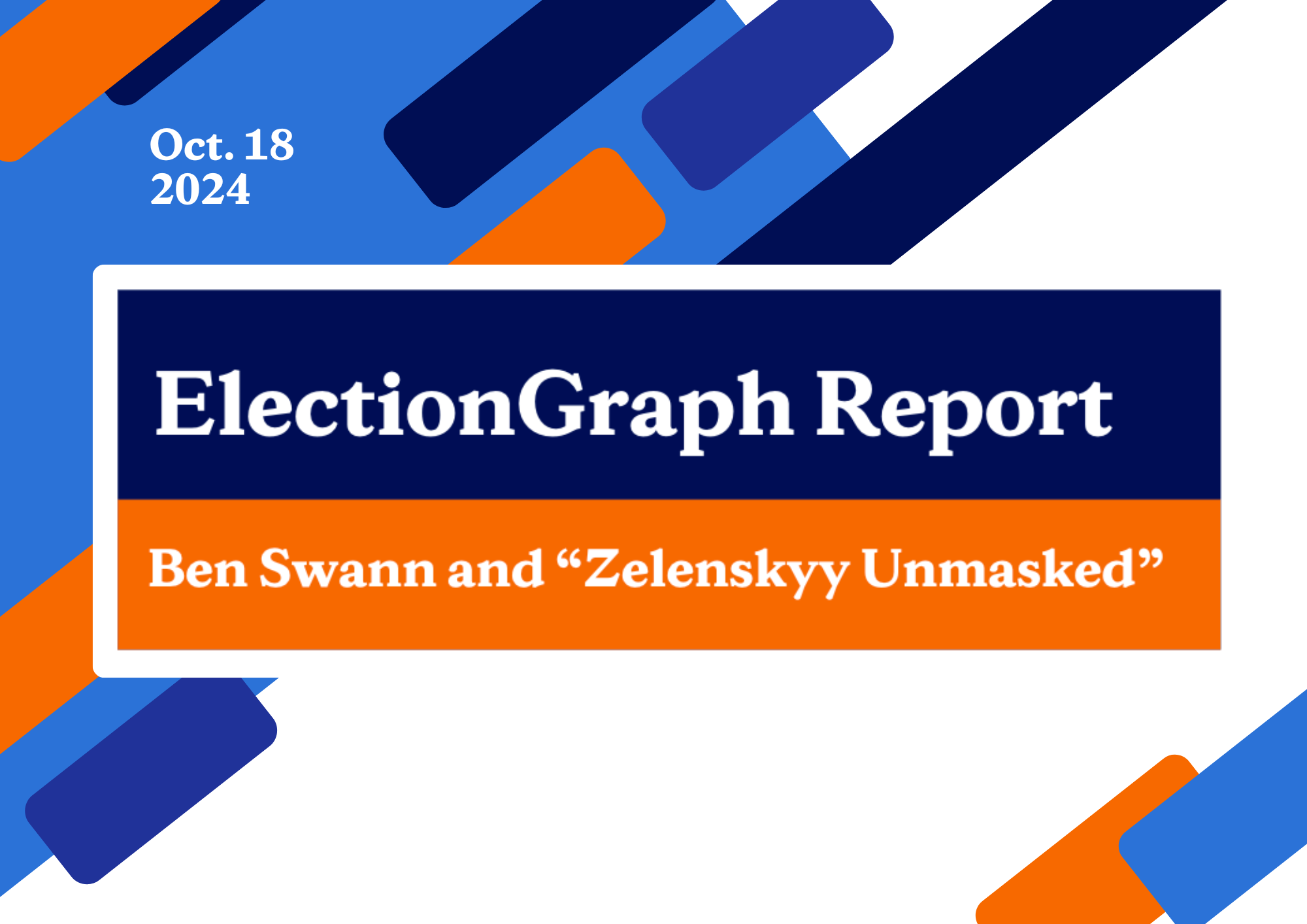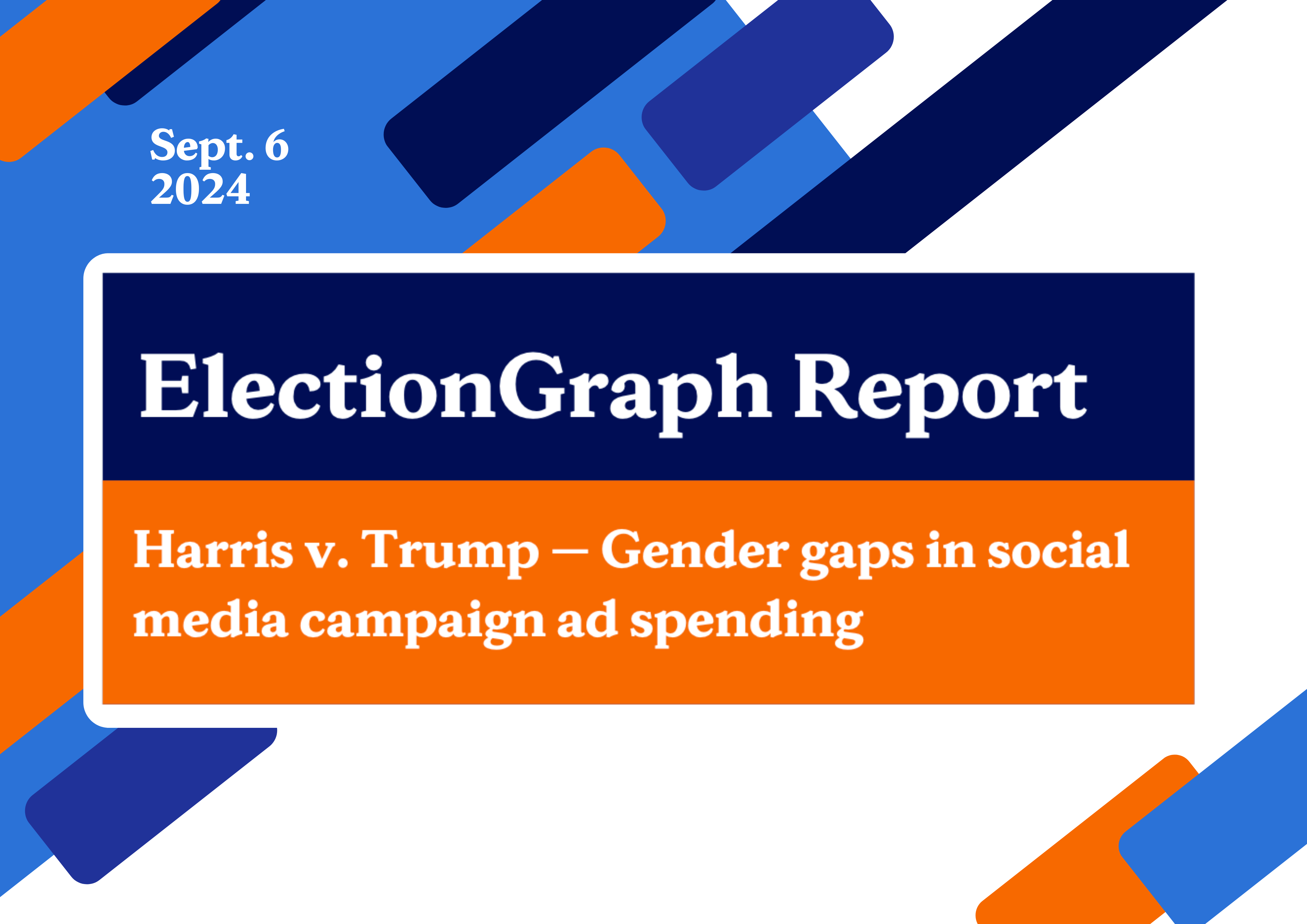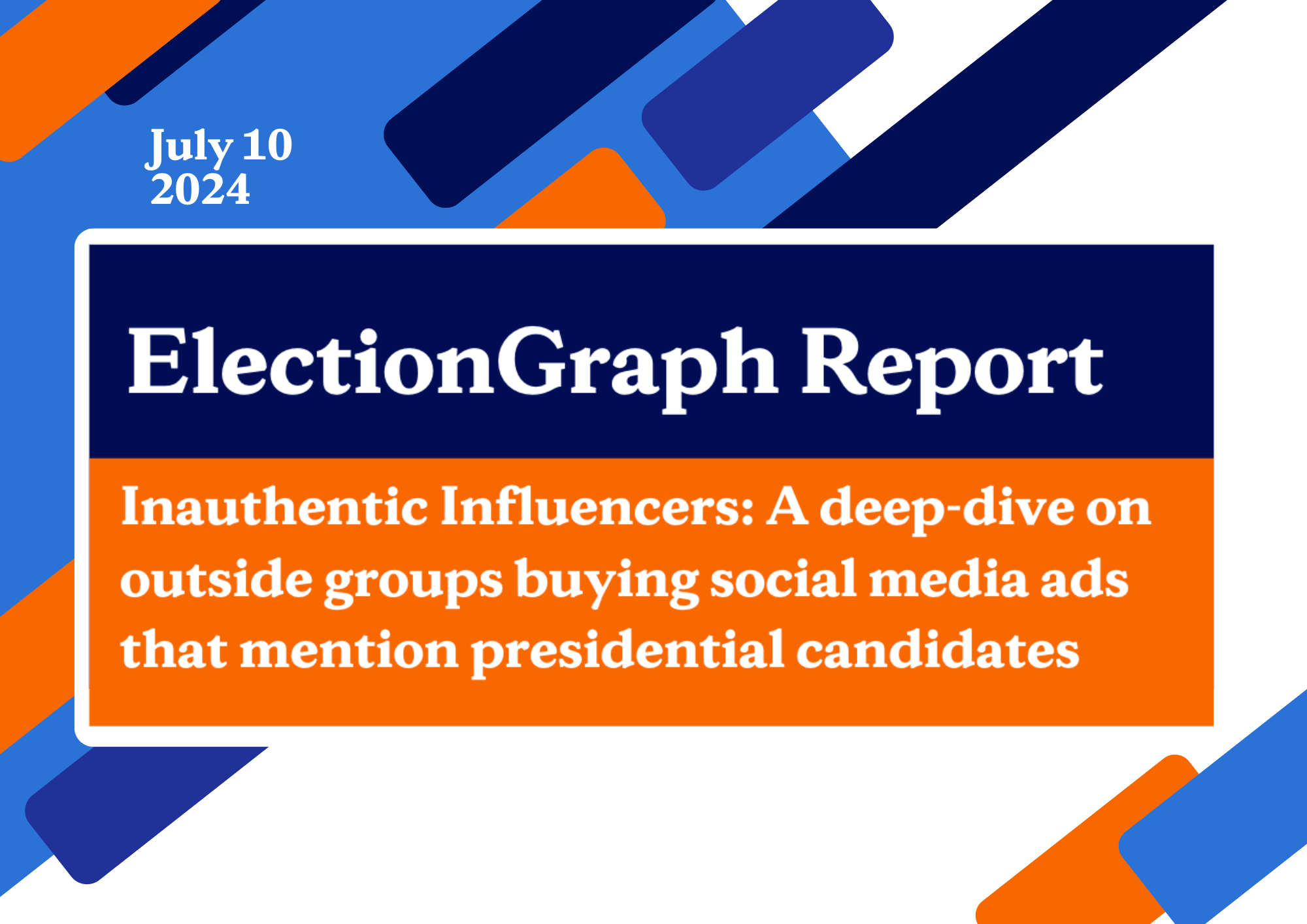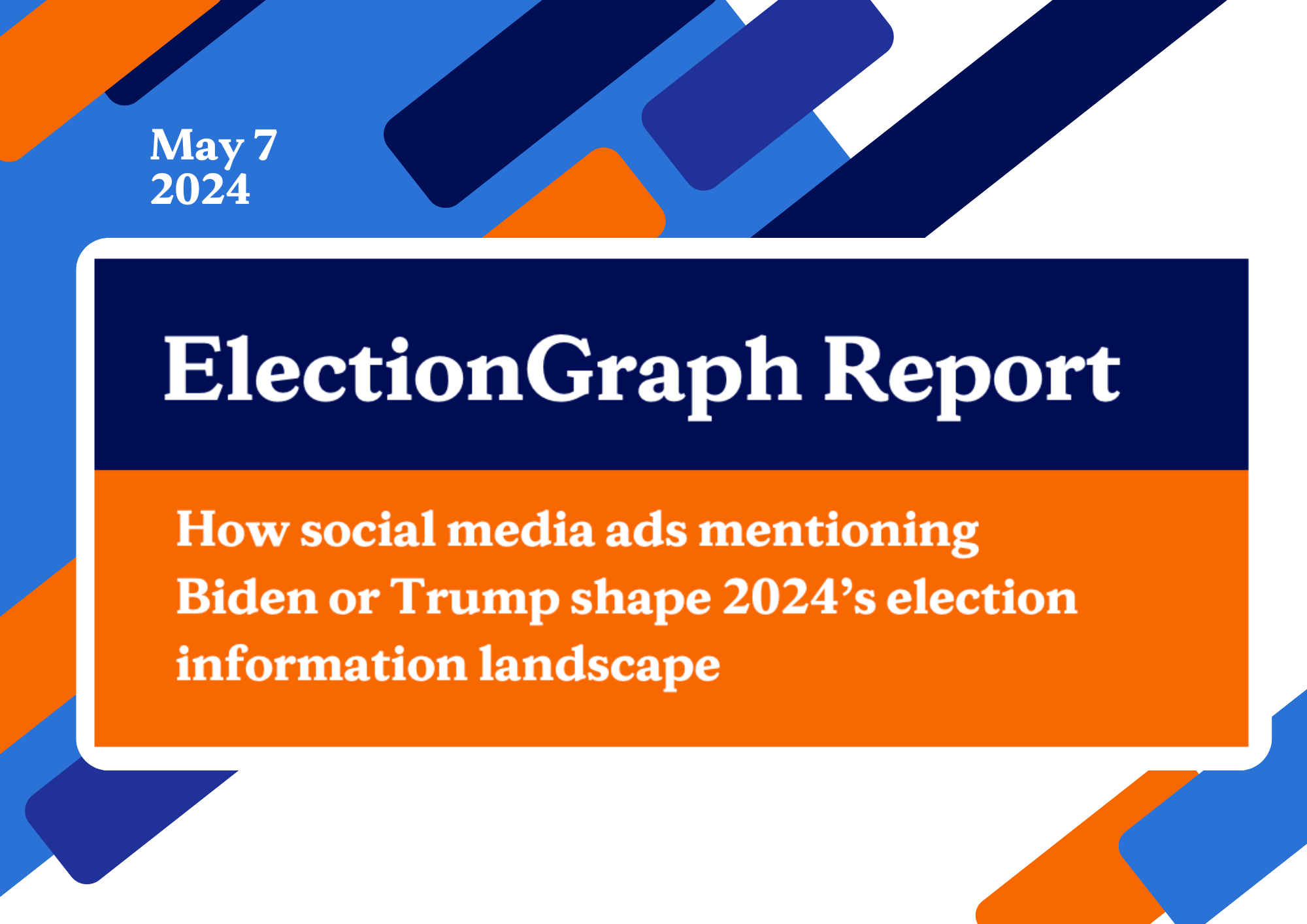Reports
About
ElectionGraph is a yearlong research project by the Institute for Democracy, Journalism and Citizenship and a team from Syracuse University’s School of Information Studies to examine trends in the U.S. presidential race and other top 2024 contests.
The project seeks to illuminate hidden trends and actors spreading and influencing inaccurate information targeting U.S. voters through social media. It is made possible thanks to a research grant from Neo4j and use of the company’s graph database technology and experts.
The research team’s efforts focus on dissecting misinformation themes, pinpointing origins of messages and tracing misinformation by collecting and algorithmically classifying ads run on Facebook and Instagram as well as social media posts on Facebook and X, formerly known as Twitter. The project will also gather input from journalists and the public about the 2024 presidential election, and races for U.S. Senate and key congressional districts.
Jennifer Stromer-Galley, senior associate dean and professor at the ISchool and a nationally recognized expert in political campaigns and misinformation, leads the researchers in collaboration with the IDJC’s Kramer Director Margaret Talev, a Newhouse professor of practice and journalist specializing in American politics, elections and the White House, and research director Johanna Dunaway, a political science professor at the Maxwell School and expert in political communication, partisan polarization and mass media.
The research team also includes research software engineer Jon Stromer-Galley, doctoral student Saklain Zaman, masters students Amol Borkar, Jill Karia, Sampada Regmi, Chinmay Maganur and undergraduate students: Sita Camara, Alexa Kocur, Luisana Ortiz, Kayla Ramos, Tyler Toledo and Stella Whitefield.
You may reach our team at democracy@syr.edu with questions, suggestions or to forward examples of misinformation that may be relevant.
In the News
December 10, 2024 | SU News
“Election ads on social media in the closing weeks of the campaign can be particularly influential, but also difficult in terms of voters’ ability to see whose money and influence is behind them, given lag times in reporting requirements,”says IDJC Kramer Director Margaret Talev, a journalist and professor of practice at the Newhouse School.
October 18, 2024 | AP News
With the assistance of the tech firm Bright Data, the AP identified a core group of influencers who played a significant role in helping promote the series. Posts by those influencers were shared by at least 9,300 other unique X accounts that have 33 million total followers, according to an AP analysis of “Zelenskyy Unmasked” X data created by Syracuse University’s Institute for Democracy, Journalism and Citizenship.
October 16, 2024 | SU News
Adds IDJC Kramer Director Margaret Talev: “Real, bipartisan concerns about election-related violence—accentuated by assassination attempts against former President Trump—have proved no match for the magnetic pull of negative, uncivil and attack-ad campaigning that Trump himself and his rivals consider too useful to set aside.”
July 10, 2024 | AP News
Political advertisements on social media are one of the best ways for candidates to reach supporters and raise campaign cash. But as a new report from Syracuse University shows, weak regulations governing online ads and haphazard enforcement by tech companies also make ads a prime source for misleading information about elections — and a tantalizingly easy way for con artists to target victims.
July 10, 2024 | SU News
“The prevalence of inauthentic groups, scams and deepfake voices just within the parameters of the search shows a massive amount of manipulation and misinformation targeting Americans through the political information consumed online,” says Margaret Talev, Kramer Director of the IDJC, professor of practice in the Newhouse School and a journalist.
May 7, 2024 | AP News
Stromer-Galley analyzed more than 24,000 political ad buys on Instagram and Facebook that were placed by 1,800 organizations from Sept. 2023 through February. Overall, the ads cost $15 million and were displayed nearly 870 million times. The findings were published Tuesday by the ElectionGraph Project at Syracuse University’s Institute for Democracy, Journalism & Citizenship through a partnership with the data science firm Neo4j.
May 7, 2024 | SU News
Research from the IDJC ElectionGraph project found that the millions paid for more than 24,000 ad buys and about 5,500 unique ads on Facebook and Instagram between Sept. 1, 2023, and Feb. 29, 2024. This amounts to an estimated 869 million impressions in the months leading up to, and during, the presidential primaries. The majority of ads involved Biden or Trump, the report found.


